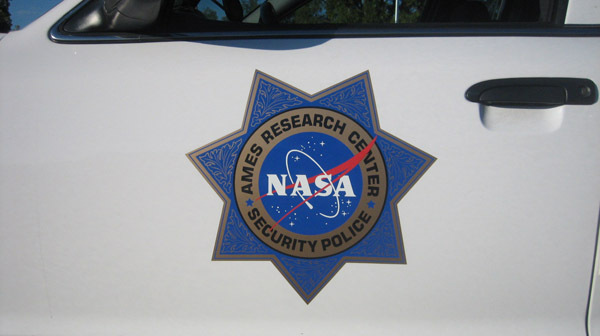This was October 2008 | « September 2008 | Main | November 2008 »
History by Magazine Covers
Posted on Thursday, October 23, 2008

From this presentation of The Economist Magazine covers ;-) (embedded below).
India On Its Way To The Moon
Posted on Tuesday, October 21, 2008
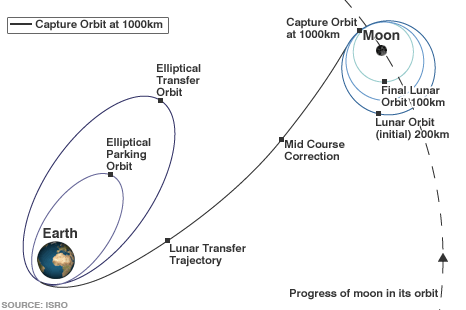
Will be curious to see when the first images from the spacecraft start appearing in cyberspace. I read here that they only switch the cameras on once they arrive in Lunar orbit...seems such a waste to have these valuable 'eyes in space' in hybernation mode while going from the Earth to the Moon. More at BBC.
International Committee on the 'Cultural Utilisation of Space' Launched
Posted on Friday, October 17, 2008
Reblogging Arts Catalyst:
The new IAF (International Astronautical Federation) Technical Activities Committee for the Cultural Utilisation of Space (ITACCUS) was announced during the Less Remote symposium. ITACCUS has been set up to promote and facilitate the innovative utilisation of space by the cultural sectors of society internationally. The term 'utilisation' is used often by the space community. In a cultural context, it may include cultural production, cultural preservation, cultural representation, cultural education and cultural development.The launch speakers were ITACCUS co-chairs Roger Malina, Director, L'Observatoire Astronomique Marseille, and Nicola Triscott, Director of The Arts Catalyst, and committee members Ciro Arevelo, Chairman of the United Nations Commitee on the Peaceful Uses of Outer Space, who welcomed the ITACCUS initiative for the contribution that the cultural sector could make to space and society's engagement with it, Mario Hernandez from UNESCO, who explained the work of UNESCO in using space surveillance systems to monitor world heritage sites, Bernard Foing from the European Space Agency and Spanish astronaut Pedro Duque.
ITACCUS will report on its activities online, and will submit a report annually on cultural utilisation of space to the UN Committee on the Peaceful Uses of Outer Space. It is developing a webspace, which will be linked from its page on the IAF website at www.iafastro.com.
Building The Interface To the Planetary Sensor Web
Posted on Thursday, October 16, 2008
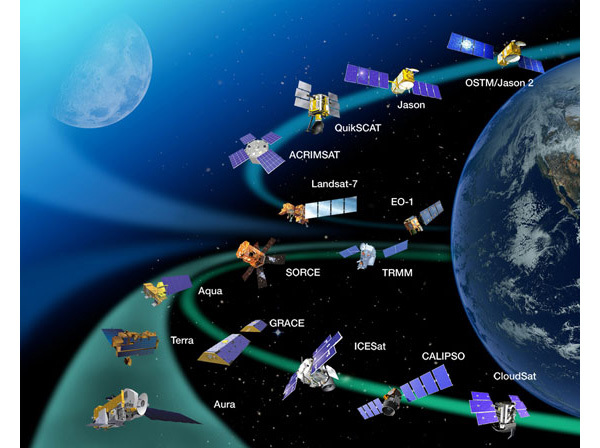
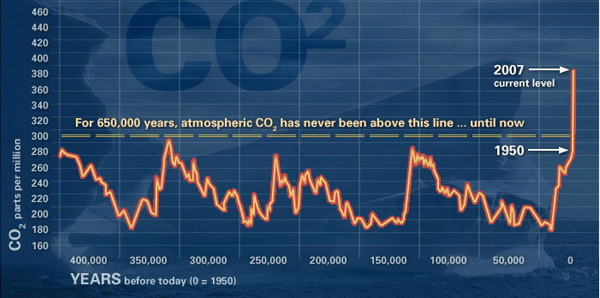
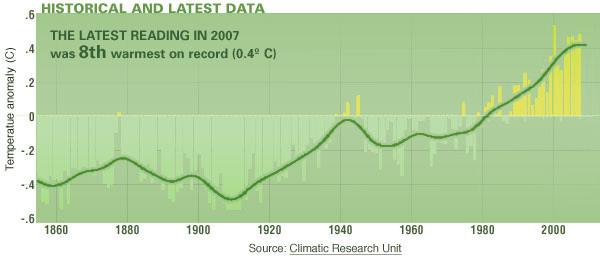
JPL launched it newly designed website today, including a dedicated site on global climate change with the telling subtitle 'NASA's Eyes on the Earth' (CNN has more). In these times of endless stock exchange graphs, stats and scares, its great to see a similar data vis design pattern emerge with the early steps towards a planetary sensor web user interface (if only we could swap the trend in above graphs with the NYSE). Sofar it seems satellite data is not really fed real-time (at least not in an all encompassing & comprehensive way) but I'm sure we'll get there, including open API's for everyone to leverage the sea of space based sensor data about the state of our planet (and beyond). On a related note, O'Reilly just released a Radar report on Where2.0 with a great introduction by Tim O'Reilly.
Some Great Videos From Michael Wesch
Posted on Sunday, October 12, 2008
Of 'The Machine is Us/ing Us' fame. Video 1. Video 2 (both embedded below). More of his interesting research at mediatedcultures.net. (via this excellent blog)
Fly Me To The Moon
Posted on Sunday, October 12, 2008
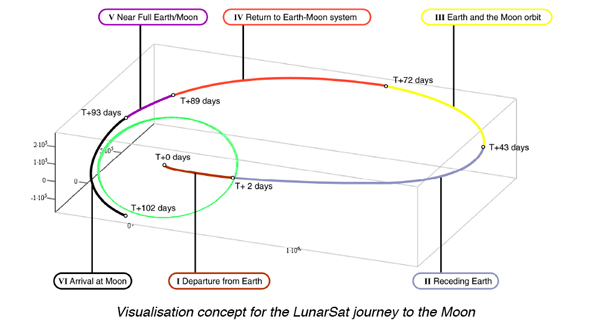
Just finished reading a great book written by Edward Belbruno on his design of advanced trajectories called "Weak Stability Boundary Trajectories". Trajectories that helped save several spacecraft stuck in Low Earth Orbit, like the Japanese Hiten spacecraft. He gives a beautiful description of how a theoretical mathematician enters the space industry (at JPL) and comes up with a highly innovative way to think about trajectory design and gravitational fields. Basically, it comes down to using the gravitational fields of the Earth and Moon to have a "ballistic capture" into Lunar orbit. One of the metaphors he uses is the wave surfer. Be too slow, and the wave passes you by. Be too fast, and the wave won't catch up with you. In Belbruno's case, he is talking about gravitational attraction (not exactly waves [at least, not it his case], but the metaphor still works to explain the idea). Brings back memories of 10 years ago when I was working as part of my thesis on a mission that was planned to take one of these fuel-efficient trajectories to the Moon (image above was my script to use onboard cameras to film the Earth during the 90-day Lunar transfer based on trajectory design by Robin Biesbroek, the green circle is the moon's orbit around the Earth). Beautiful to read how innovation in space exploration happens. And he even manages to bring Vincent van Gogh's Starry Night into his conceptual framework (podcast with Belbruno at The Edge).
Nova Spivack Talks about Role of Media in Future Global Brain
Posted on Friday, October 10, 2008
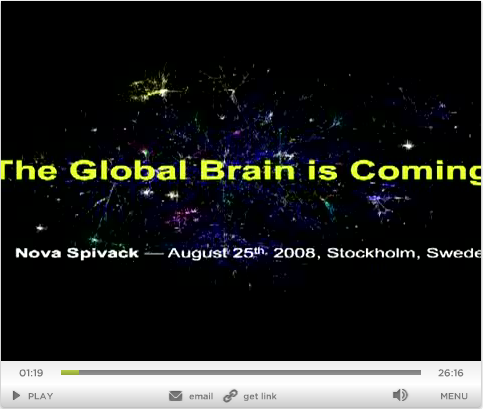
In reference to my previous post, this is what I call an INSPIRING start of a 3-day weekend ;-). Nova basically calls it my favorite talk out of all the talks I have given (more videos from GRID08). I hope whoever gets to decide on where to spend the money for SEC. 407 408 of the NASA Authorization Act 2008 takes the time to listen to his insights:
SEC. 407. PARTICIPATORY EXPLORATION.(a) In General- The Administrator shall develop a technology plan to enable dissemination of information to the public to allow the public to experience missions to the Moon, Mars, or other bodies within our solar system by leveraging advanced exploration technologies. The plan shall identify opportunities to leverage technologies in NASA's Constellation systems that deliver a rich, multi-media experience to the public, and that facilitate participation by the public, the private sector, and international partners. Technologies for collecting high-definition video, 3-dimensional images, and scientific data, along with the means to rapidly deliver this content through extended high bandwidth communications networks shall be considered as part of this plan. It shall include a review of high bandwidth radio and laser communications, high-definition video, stereo imagery, 3-dimensional scene cameras, and Internet routers in space, from orbit, and on the lunar surface. The plan shall also consider secondary cargo capability for technology validation and science mission opportunities. In addition, the plan shall identify opportunities to develop and demonstrate these technologies on the International Space Station and robotic missions to the Moon.
(b) Report- Not later than 270 days after the date of enactment of this Act, the Administrator shall submit the plan to the Committee on Science and Technology of the House of Representatives and the Committee on Commerce, Science, and Transportation of the Senate.
A Sobering Presentation from the Valley At The Start Of A 3-day Weekend
Posted on Friday, October 10, 2008
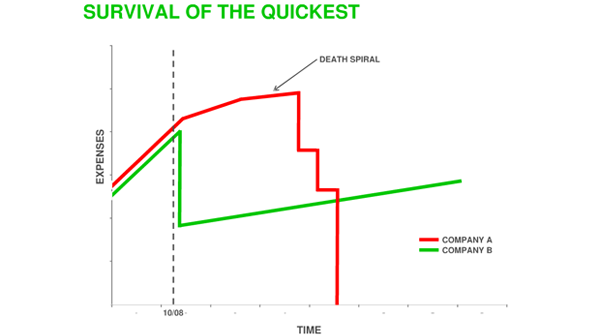
A presentation by Sequoia Venture Capital on how to survive the times ahead.
Software, The Final Endless Frontier
Posted on Tuesday, October 7, 2008
From a post by Vint Cerf in the series on Google's 10th anniversary:
A box of washing machine soap will become part of a service as Internet-enabled washing machines are managed by Web-based services that can configure and activate your washing machine. Scientific measurements and experimental results will be blogged and automatically entered into common data archives to facilitate the distribution, sharing and reproduction of experimental results. One might even imagine that scientific instruments could generate their own data blogs.I wonder when small sats finally turn into soap boxes. Vint continues:
These are but a few examples of the way in which the Internet will continue to surround and serve us in the future. The flexibility we have seen in the Internet is a consequence of one simple observation: the Internet is essentially a software artifact. As we have learned in the past several decades, software is an endless frontier. There is no limit to what can be programmed. If we can imagine it, there's a good chance it can be programmed. The Internet of the future will be suffused with software, information, data archives, and populated with devices, appliances, and people who are interacting with and through this rich fabric.Read the whole post here.
Nicolas Carr at The Colbert Report
Posted on Thursday, October 2, 2008
Besides the book, the interview refers to an article Carr wrote in the Atlantic entitled: "Is Google making us stupid" (via). I don't know about that, but Steve's mockery of continuous partial attention is something I see here a lot. Everybody is constantly checking their email and IM's on their iPhones: in meetings, at seminars, during lunch... The full Colbert episode is also available at Hulu but its US only, and the video expires in a week or 2.
Every company is a media company . . .
Posted on Thursday, October 2, 2008
From the Silicon Valley Watcher blog:
I've often spoken about how every company is now a media company and needs to master the new media technologies at our disposal, such as RSS, blogging, Twitter, social media, etc. But being a media company requires a commitment, it is not a "campaign" that runs for a few months and finishes--it is a long term commitment and not everyone understands this aspect and what that means.Seems to tie in with this post over at O'Reilly Radar.I love to remind people that these are fascinating times for professional communicators, whether they are media professionals or PR professionals because there is so much change going on. There are still so many questions about the best use of the new media technologies. What are the best formats, the best practices? And we all get to figure out how this all works, we all have a hand in helping to create the future.
Artists get involved in defining the Aims and Missions of a Space Agency
Posted on Wednesday, October 1, 2008
The IAC is on this week. Too bad I am missing it. Would they possibly think of recording the sessions and putting them online like Techcrunch did with their Techcrunch50?. There's good stuff happening, like the side conference Less Remote, which includes discussions on Cultural Utilisation of Space as blogged by Nicola Triscott at the Arts Catalyst blog:
Yesterday evening, we had some excellent examples presented of 'cultural utilisation' of space, notably Marko Peljhan reported on the development of the Slovenian Space Agency, with artists contributing directly to the formulation of its aims and missions.This morning, we have had cracking presentations from Andrew Stones, Iain Bolton, Frank Pietronigro and Hans-Arthur Marsiske. Artist Andrew Stones challenged any notion of ‘objectivity’ in deciding space priorities and reflected on how space is influenced by the cultural imaginary and by dominant and privileged interests. Iain Bolton examined the influence of political culture in the area of national space policy, particularly in the US which differs from the space policies of other nations because of its explicit goal of remaining ‘the leader’ in space exploration. Frank Pietronigro joined us by video link from San Francisco to propose the potential contribution of queer culture to the evolution of future space exploration. Hans-Arthur Marsiske reflected on the darker aspects of the legacy of Christopher Columbus (after whom the new ESA ISS laboratory is named) and what this might imply for future encounters with alien cultures.
The future is process, not a destination
Bruce Sterling
Everything is ultimately becoming information technology
Ray Kurzweil
Data is the Intel inside
Tim O'Reilly
There is only one machine and the web is its OS
Kevin Kelly
The medium is the message
Marshall McLuhan


